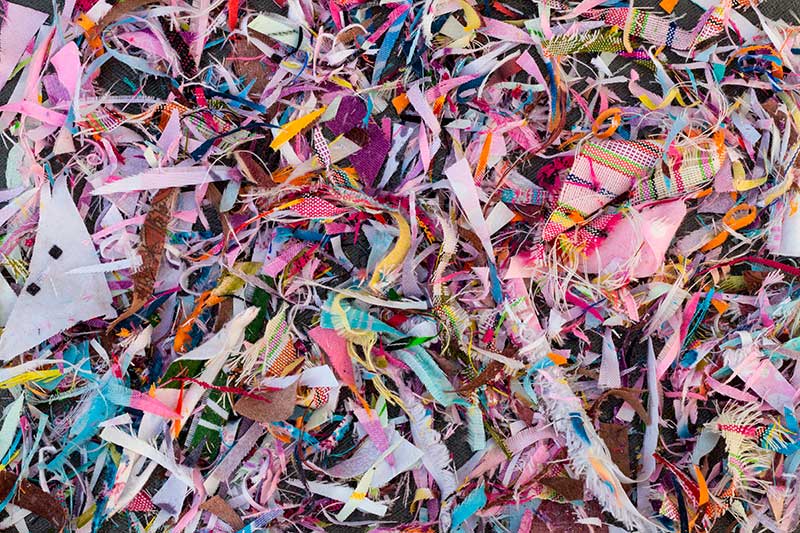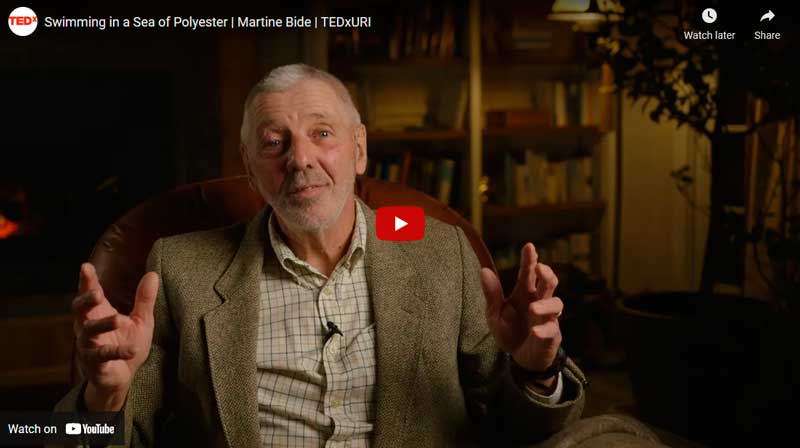Research Areas: Textiles
More than 100 million tons of textile fibers are produced each year. The wear and laundering of textile items result in the continual shedding of microfibers into the environment. Unlike other plastics waste, these are released in micro form and are not obviously visible or retrievable. Many of these microfibers/microplastics, both synthetic and natural, end up in the marine environment, where they form 85% of the microplastics pollution.
As the birthplace of textile manufacturing in the U.S., the opportunity for Rhode Island’s public research university to directly address this specific microfiber problem is especially poignant. Textile scientists in URI’s Department of Textiles, Merchandising and Design are working alongside marine biologists, engineers, pharmacists and chemists, and in partnerships with the Rhode Island Textile Innovation Network (RITIIN) and its textile industry to inform microfiber research programs and the future of both textiles and the treatment of the effluent wastewater as a result of washing these synthetic materials.
Projects
There are increasing legislative, social, and environmental factors motivating protection of the environment, including the oceans. Ocean plastic wastes (OPW) are now recognized as one of the most serious environmental issues for marine wildlife. Ingestion of plastic debris or entanglement has been recorded in 44-50% of all seabirds, all species of sea turtles, otters and fish. Past estimates suggest that between 4.8 and 12.7 million metric tons of plastic entered the oceans in 2010. Currently,...
Read MoreThis project contributes to sustainability research in management and organization studies, regarding how organizations engage with environmental and social grand challenges. Specifically, it is based on a longitudinal in-depth study of a large fashion company’s internal transformation that required change in materials used and industrial processes. The lead researcher followed the focal company’s sustainability initiative for over 7 years and conducted in-depth interviews with corporate managers, including both executives and middle managers. To complement this...
Read MoreThis research explores the discourses and practices of sustainability in fashion and textile industry. Specifically, in this international project, the lead researcher conducted a multi-sited ethnographic fieldwork starting from cotton farms and all along the production facilities (e.g., spinning, dyeing, knitting, and weaving, and cutting and sewing facilities) until a t-shirt reaches to retail stores in the US. The researcher interviewed people across different facilities and positions, such as workers, managers, farmers, nonprofit representatives, and sustainability...
Read MoreAcross the globe, scientists are trying to characterize microplastics and the potential impacts it may have on both ecosystem and human health. Given the prevalence of microplastics, specifically microplastic fibers, in the marine environment, it is critical to understand the potential health risks they pose to oysters and the coastal communities, sustainable fisheries, and aquaculture they support within Rhode Island. What is the impact on environmental, human, and economic health relative to this one species?...
Read MoreAn investigation into the needs and constraints involved in planning and designing textiles and apparel for intravehicular and in-hab use in long-duration space travel and off-Earth habitation. Karl’s research in extreme environments informs textiles, design, and human culture within closed-loop ecosystems. It will greatly inform the future sustainability in textiles – the material technology, constraints, and the environmental concerns, including how to dispose of clothing, along with the cultural behaviors and adaptation to textiles.
Read MoreA multi-disciplinary investigation, led by Karl Aspelund and Terry Gunnell, into the intense and focused efforts toward culture creation in Iceland in the latter part of the 19th century by the cohort known as “the Evening Society” and its de facto leader the painter and designer Sigurður Guðmundsson. This work revolved around Dress, Textiles, and National Identity and involved textiles and dress, theater, literature, music, and the founding of a library and museum, along with...
Read More








